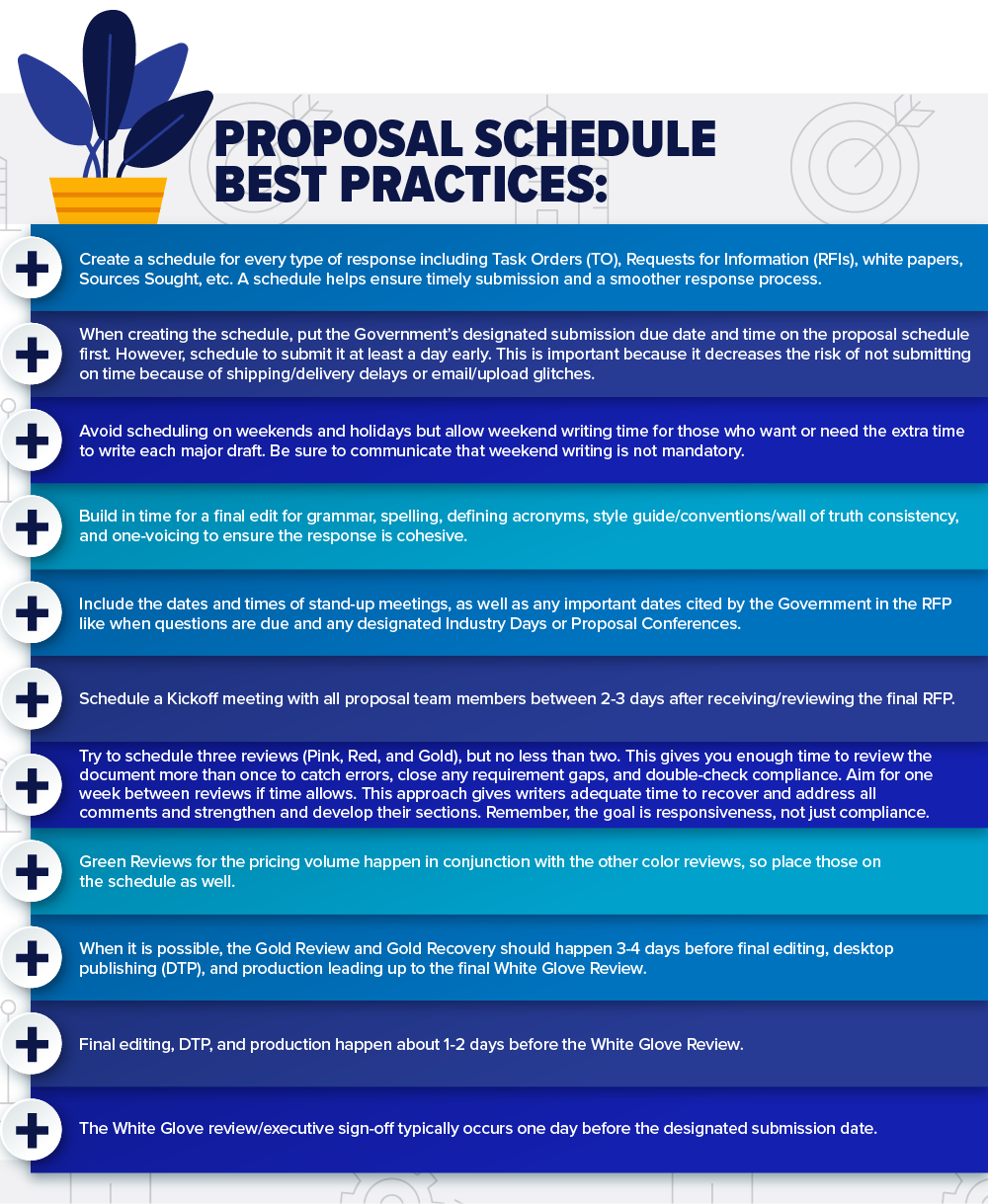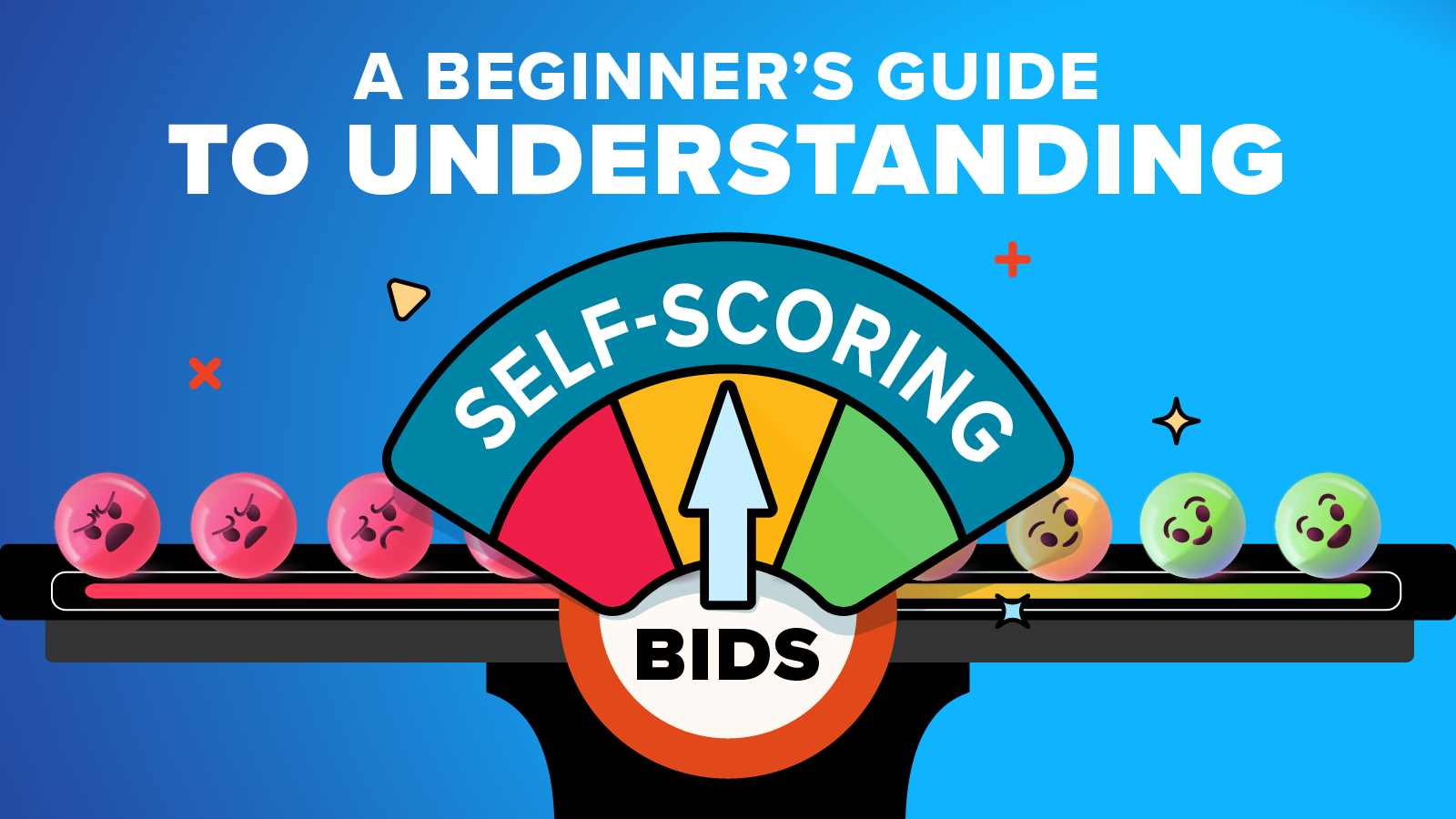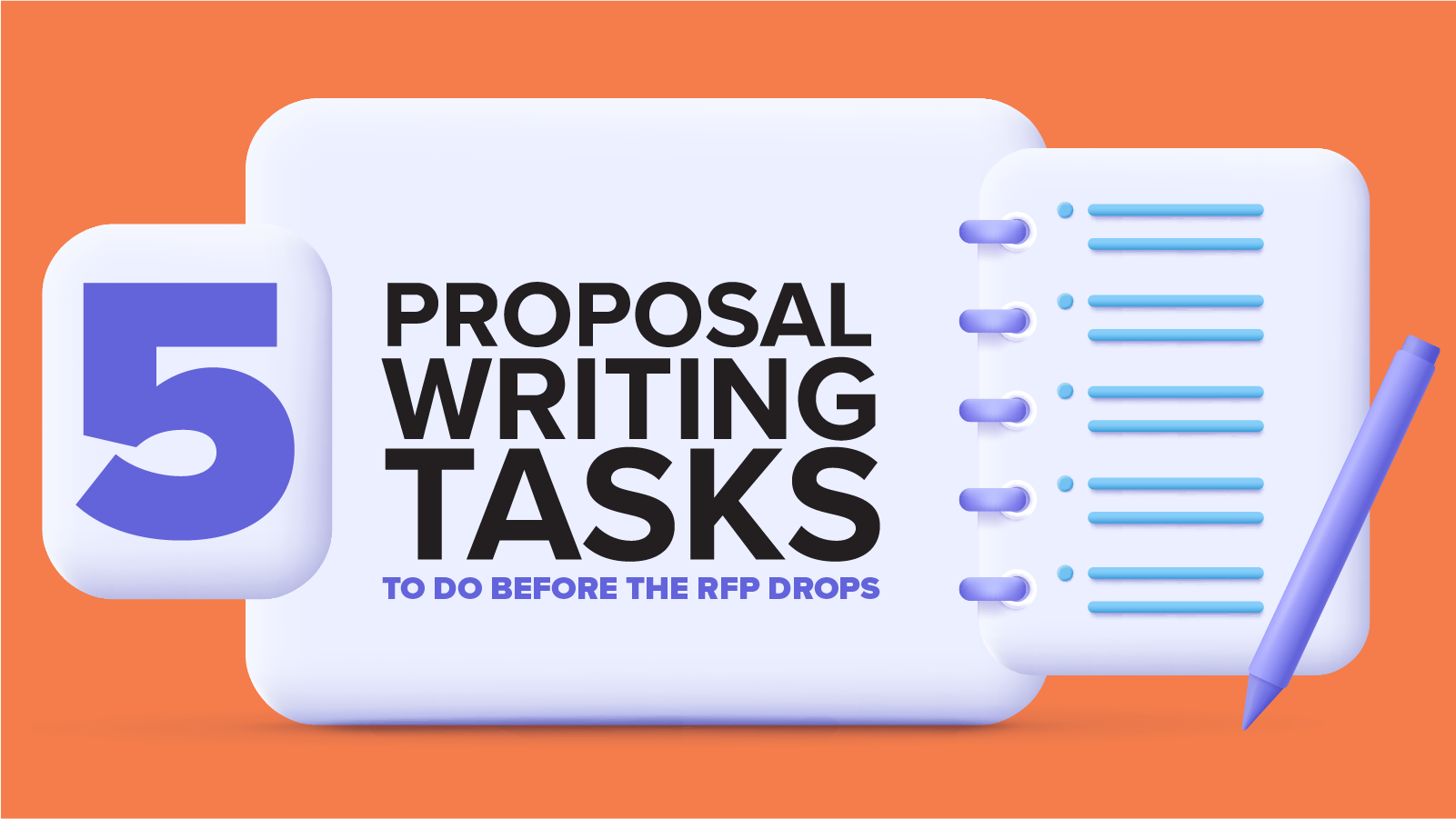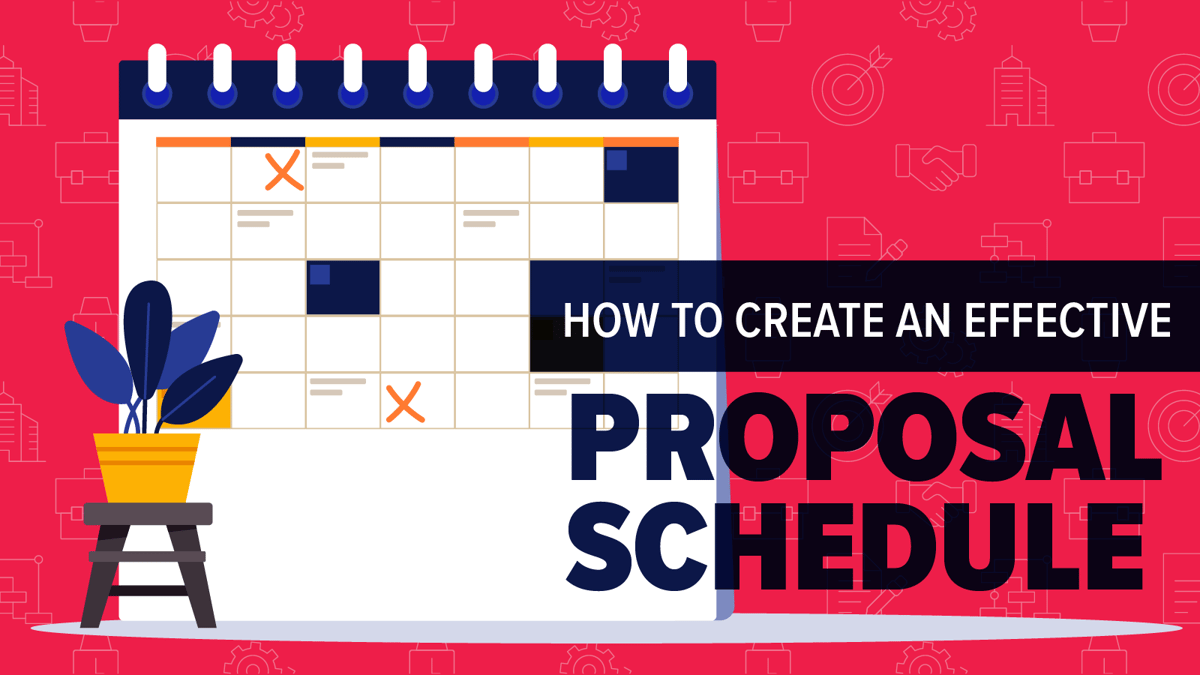
For businesses seeking to secure Government contracts, a clearly defined and comprehensive proposal schedule is essential for a smooth and successful proposal submission. The proposal schedule outlines the timeline, milestones, and deliverables of the proposal development process, ensuring efficient execution and compliance with the Government's requirements. This article explores the critical steps in creating a robust proposal schedule based on a 30-day submission requirement. Additionally, we provide examples of how to adjust your schedule for quick-turn proposals.
The Purpose of the Proposal Schedule:
A proposal schedule is one of the most essential tools for effective proposal management. It helps the Proposal Manager direct the proposal process and helps the proposal team visually track and monitor their progress.
Keep in mind that the proposal schedule is a live document and should be flexible to accommodate any Amendments or changes caused by the availability/needs of the proposal team. These schedule development guidelines are not set in stone. Adjust the schedule as needed to fit the needs of your proposal team and the final submission.
Proposal Schedule Development:
After assessing the Request for Proposal (RFP) and evaluating the requirements, the proposal manager begins developing the schedule. The proposal manager prepares the proposal schedule by working backward based on the submission date. During schedule development, they identify key tasks and milestones, establish realistic timeframes for each task and milestone, and assign roles and responsibilities to team members. Once complete, the schedule provides a detailed guide for the proposal effort at any given time, highlighting milestones such as when questions are due and Pink Team, Red Team, Gold Team, and White Glove Reviews.
The schedule should be realistic and include the required management review and sign-off activities. For quick-turn responses like task orders (TOs), shorten the distance between reviews, and if needed, eliminate the Pink Team Review cycle and combine it to become a Pink/Red Team Review that aims for a more red-ready document by the first review. Key activities included in the proposal schedule include:
• Proposal Kickoff
• Color Reviews
• Final Editing and White Glove Review
• Final Production
• Proposal Submission
• Glory Day!
Day 1-2: Read the RFP
Before creating a proposal schedule, it is crucial to thoroughly understand the requirements and expectations outlined in the Government's RFP. Within 24 hours of the RFP release, all proposal team members should conduct an initial RFP read-through to dissect the RFP and develop a clear understanding of the requirements.
Day 3: Proposal Kickoff
The Kickoff Meeting is one of the critical milestones on the proposal schedule. It provides information, direction, and motivation to the proposal team. The Proposal Manager should prepare the Proposal Management Plan (PMP) for distribution at the proposal Kickoff Meeting, either in hard copy or electronically via the proposal site.

Day 4: Prepare a Realistic Schedule
The Proposal Manager should prepare the proposal schedule setting realistic timeframes for each task and milestone is crucial. Consider factors such as the complexity of the proposal, the availability of resources, and the expertise of your team members. Be mindful of any external dependencies or coordination required with subcontractors or partners. Building some buffer time can help mitigate unexpected delays and ensure on-time submission. You can use Microsoft Word, Excel, or whatever tool is most accessible for your team or preferred by your client to create the schedule.
Day 5-6: Assign Responsibilities and Resources and Leverage Proposal Management Tools
Clearly define and assign responsibilities to the team members involved in the proposal development process. Identify the key individuals responsible for each task and establish clear lines of communication. Ensure that the team has the necessary resources to complete their assigned tasks efficiently, such as access to relevant data, tools, and technology. Use proposal management tools and software to streamline the scheduling process and enhance collaboration among team members.
Day 7-23: Task Execution and Color Reviews
Team members may now start working on their assigned tasks per the schedule. This time may include storyboarding or solutioning sessions to assist writers in creating substantive content. A critical aspect of the proposal development process is incorporating multiple review and revision cycles to ensure the proposal meets the Government's requirements and addresses all evaluation criteria. Ideally, color reviews are scheduled about a week apart (Pink Team Review followed by Red Team Review one week later, followed by Gold Team Review one week later). Allocate sufficient time for internal reviews, seeking input from subject matter experts and senior management.
Day 24-25: Final Editing and White Glove Review
In the final stages of proposal development, allocate time for proofreading and quality assurance activities. Review the entire proposal for consistency, clarity, and compliance with the RFP. Check for grammatical errors and formatting issues, and ensure all necessary attachments and supporting documents are included. Conduct a final review to ensure the proposal aligns with all Government requirements.
Day 26-28: Final Production
You are almost there! During final production, you prepare any hard and soft copy versions of the response based on the instructions provided in the RFP. If a PDF file is required, make sure it adheres to any sizing requirements set by the Government.
Day 29: Proposal Submission
Submission day has finally arrived! Typically, the production team will assist with logistics planning for the delivery, including preparing the shipping box along with labels, packing lists, and receipts, checking its contents, and sealing it. After that, a company representative delivers the proposal. Keep in mind, that it is an industry best practice to submit your proposal one day before it is due. If the Government requires an electronic submission, the Capture Manager or contracts team will submit the proposal to the Contracting Officer via email or through the Government's portal. Below is a sample schedule for a 30-day proposal schedule.
Day 30: Glory Day!
Enjoy and take time to breathe and bask in the post-submission glory!
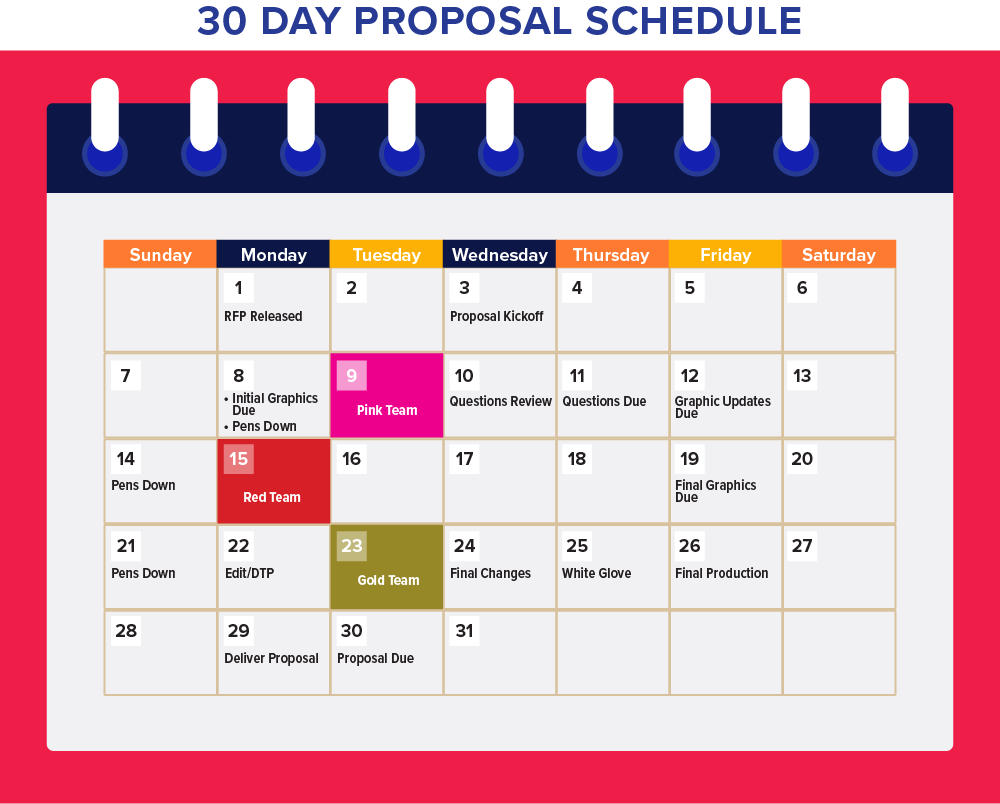
What if you have less than 30 days?
If you find yourself working on a quick-turn proposal, do not fret! With a quick turn response, the duration of each activity may vary based on the proposal's specific requirements, the team's size, and other project-specific factors. Adjustments can be made to the timeline as necessary, but it is an industry best practice to include at least two review cycles. For more minor proposals and shorter turnarounds, you can adjust your schedule as follows:
- For a 10-day turnaround, hold a Red Team Review without a formal debrief as well as a White Glove Review before submission; hold multiple working In-Process Reviews (IPRs).
- For a 15-day turnaround, hold a Red Team Review with a formal debrief as well as a White Glove Review before submission; hold multiple working IPRs.
- For a 20-day turnaround, hold an informal Pink Team Review (no debrief) and a formal Red Team, Gold Team, and White Glove Review.
- For a 25-day turnaround, hold a formal Pink Team, Red Team, Gold Team, and White Glove Review; keep all reviews to one day or less.
Below is a sample schedule for a quick-turn proposal and a best practices cheat sheet.
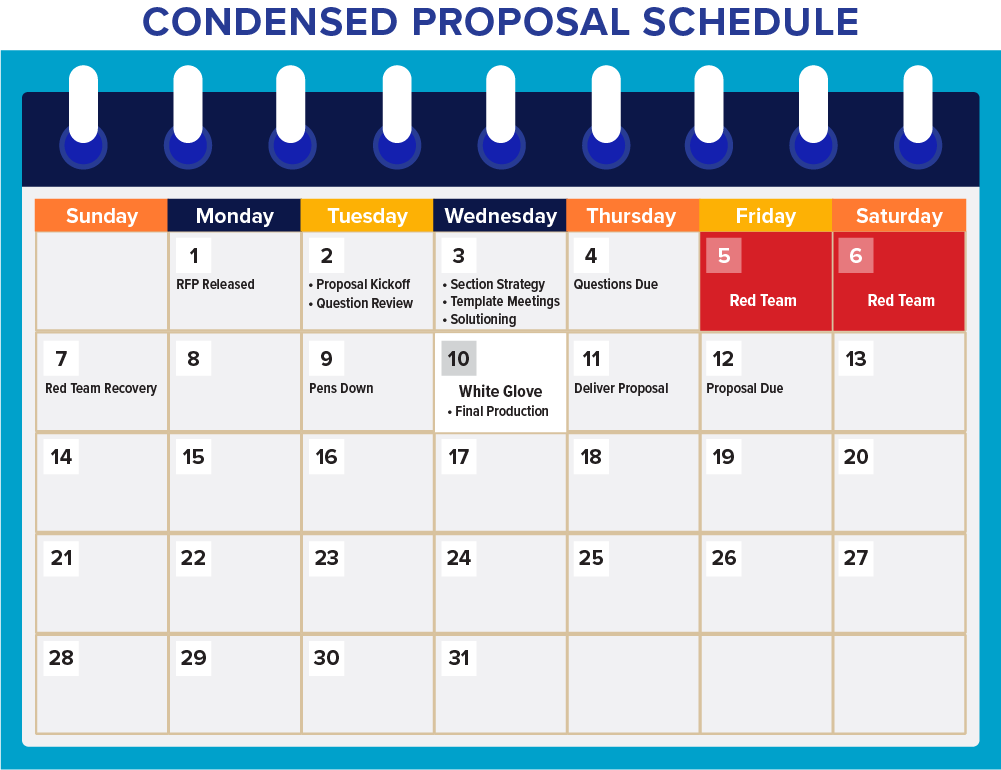
Conclusion
Creating a well-structured and comprehensive schedule is vital for timely proposal submission. By identifying key milestones, setting realistic timeframes, and incorporating multiple review cycles, businesses can develop strong proposals that have a higher chance of success. A meticulously planned and executed proposal schedule strengthens your ability to deliver a timely response.



